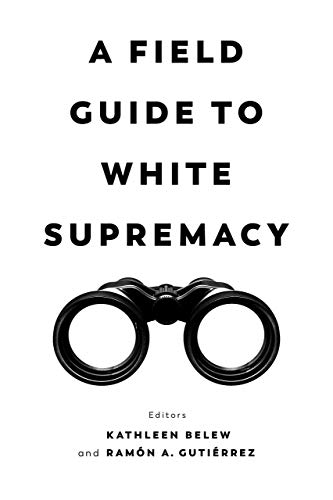
A Field Guide to White Supremacy PDF
617 Pages·2021·2.7437 MB·other
Most books are stored in the elastic cloud where traffic is expensive. For this reason, we have a limit on daily download.
Preview A Field Guide to White Supremacy
Description:
"This Field Guide to White Supremacy illuminates the long and complex career of white supremacist and patriarchal violence in the United States, ranging across time and across impacted groups in order to provide a working volume for those who wish to recognize, understand, name, and oppose it. We focus here not only on the most catastrophic incidents of white supremacist domestic terrorism-like the 1995 bombing of the Oklahoma City federal building and more recent mass shootings at stores and places of worship-but also on the manifold ways that overt and covert white supremacy, supported by often-violent patriarchy and gender norms, have shaped American law, life, and policy. A field guide is meant to train observers to notice a particular phenomenon-here, white supremacy-and its distinctions. This manual will help observers to notice and name variant forms of white supremacy, ranging from systems to laws, from hate crimes to quiet indifference, from the everyday interactions that comprise white supremacist society to the movements that demand something else. A Field Guide to White Supremacy, in other words, is meant as a resource for journalists, activists, policymakers, and citizens who wish to understand the history, sociology, and rhetoric of this phenomenon. It also offers a sampling of some of the best writing and most recent scholarship on these subfields, to spark broader conversations between journalists and their readers, teachers and their students, activists and their communities. What is white supremacy? White supremacy is a complex web of ideology, systems, privileges, and personal beliefs that create unequal outcomes along racial lines across multiple categories of life including wealth, freedom, health, and happiness. It is not a matter of argument among the vast majority of scholars, but of demonstrable fact. White supremacy includes both individual prejudice and, for instance, the long history of the disproportionate incarceration of people of color. It describes a legal system still predisposed towards racial inequality even when judge, counsel, and jurors abjure racism at the individual level. It is collective and individual. It is old and immediate. Some white supremacists turn to violence, but there are also a lot of people who are individually white supremacist-some openly so-and reject violence. This Field Guide proposes that a better understanding of hate groups, white supremacy, and the ways that racism and patriarchy have braided into our laws and systems can help people to tell, and understand, better stories. To read the intertwined histories of hate crimes against Black Americans, women, Muslim Americans, Latina/o immigrants, Jews, and Asian migrants is to see the large patterns of exclusion and policing that have made possible the continued rule of white supremacy in the twenty-first century. It is to begin to inventory the injustices, past and present, with which the nation would have to reconcile to truly fulfill its democratic promise"--
See more
The list of books you might like
Most books are stored in the elastic cloud where traffic is expensive. For this reason, we have a limit on daily download.
